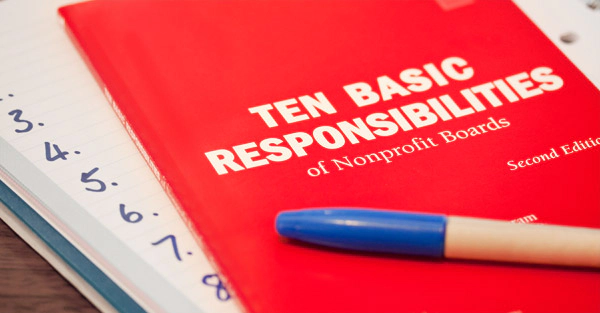legal
Non-Profits and Trademarks: The Power of the Brand
Published: August 20, 2012
Read Time: 4 minutes

How significant is the good name, image and branding of your non-profit organisation? Can your organisation prevent others trading off of its reputation?
For most not-for-profits (NFPs), their brand and associated reputation is their most important asset. As such, how can NFPs protect this valuable asset? The answer is simple: by registering a trademark_*.
A Leading NFP
NFPs, like other corporations, benefit from strong branding and trademark protection. For example, research by the Salvation Army reveals that their Red Shield logo is recognised by 92 per cent of the Australian public1.
The Salvation Army protects this significant reputation with over 60 pending and registered trademarks in Australia.
What is a Trademark?
A trademark is a distinctive sign which identifies certain goods or services as those produced or provided by a specific person or company. You’ll commonly see names and logos as trademarks, however even shapes, sounds and scents can be protected as trademarks!
The origin of trademarks dates back to ancient times, when craftsmen reproduced their signatures, or “marks” on their artistic or utilitarian products.2 Today’s expanded system of trademark registration and protection assists consumers to identify, assess and acquire products and services based on their distinctive trademarks.
Trademarks in Australia
In order to obtain trademark registration in Australia, an application must be made with IP Australia3. Registration is based on an international system of ‘classes’, with 45 classes covering countless goods and services. For example, charitable services can be covered, as can sales, marketing and advertising.
An organisation simply needs to think about how it uses trademarks; its name, logo, catch phrases, program names and any other distinctive identifiers of its business. The organisation should also think about how and when it uses these. Once a complete list is established the relevant marks can be applied for. Upon registration, the organisation is able to confidently use the mark in relation to any of the protected goods and services, and know that it can enforce its rights to prevent others from using the same or similar mark for the same or similar goods and services.
Why Register
One of the most frequent questions asked by NFPs is if the registration of a trade mark is really necessary if an organization already has a business, company or domain name registered. The answer is a definite “yes”.
Although the latter are valuable commercial tools, they do not offer real protection of intellectual property rights. Only trade marks offer enforceable proprietary rights in relation to a name or a logo. Registration of a trademark gives the owner exclusive use of the mark for the goods and services for which it was registered, and using the mark with the exclusive ® symbol cautions others that the mark is protected!
While there is no compulsory legal requirement to register a trade mark, failure to do so could result in an organisation losing its rights to trade under a name, or having its rights and reputation weakened from use by others. Registering a mark makes protecting and enforcing rights over it much easier and potentially saves a great deal of time, money and uncertainty down the line.
5 Top Trade Mark Tips for NFPs
Following are our top 5 tips for NFPs in relation to trade marks:
1. Search: Before adopting a name or other trade mark search the IP Australia online trade marks database; considering variations in spelling, spacing, and word order. Of course, a comprehensive clearance search should be done as well, as someone using a similar mark prior to you in a related or competing industry, even if they do not have a registration, is a significant potential problem.
2. Register: Look to register your valuable trade marks. Seek legal advice to ensure that your mark is not descriptive and that the organisation is protecting goods and services that are relevant and precise. Whilst the application process can be straightforward, the task of describing the list of goods and services to register can be tricky, particularly for the types of services that many NFPs offer.
3. Use and Renew: Make sure the trade mark is used and renewed. A registered trademark can “live forever” provided it is in active use and is renewed every ten years.
4. Monitor: Monitor the market and your competitors. It is in your interest to know what’s going on around you and your trademark. You should stay aware of new and existing trademarks being used in your industry. You can start by checking IP Australia’s online database for new trademarks being lodged.
5. Enforce: Be prepared to protect your trademark. A trademark is a personal property right, which means it is your responsibility to take action to protect it. If you think someone is infringing on your trademark rights, you should seek legal advice from an IP professional as soon as you can.
In a society where image and reputation is vital to the success of any business or organisation, a registered trademark is an essential tool in protecting the status and character of your organisation.
Share this Article
Recommended Reading
Recommended Viewing
Author
-
Principal Director
FAL Lawyers
- About
-
Fabiola advises clients on trade mark portfolio protection strategies and prosecutes applications for registration of trade marks both in Australia and internationally, clients benefitting from her extensive overseas networks. Fabiola has extensive experience in the maintenance of brand portfolios in from a broad range of industries including healthcare, technology, media and broadcasting in Australia, New Zealand and the Americas. Fabiola began her career in a top-tier international law firm which boasts one of the most prominent intellectual property teams in Latin America and worked for a specialised IP firm before joining FAL. Fabiola is fluent in English, Spanish and French.
Found this article useful or informative?
Join 5,000+ not-for-profit & for-purpose directors receiving the latest insights on governance and leadership.
Receive a free e-book on improving your board decisions when you subscribe.
Unsubscribe anytime. We care about your privacy - read our Privacy Policy .







